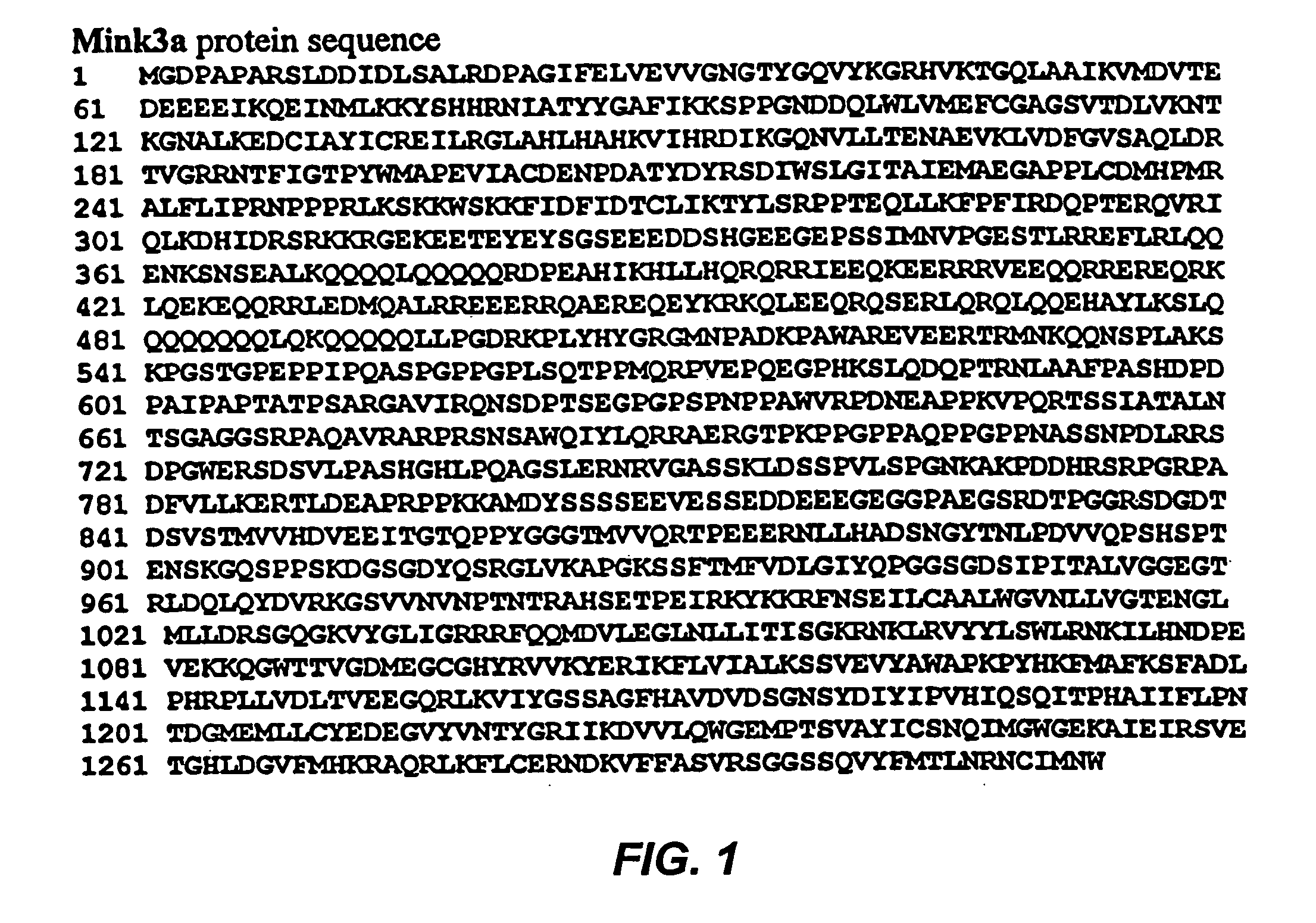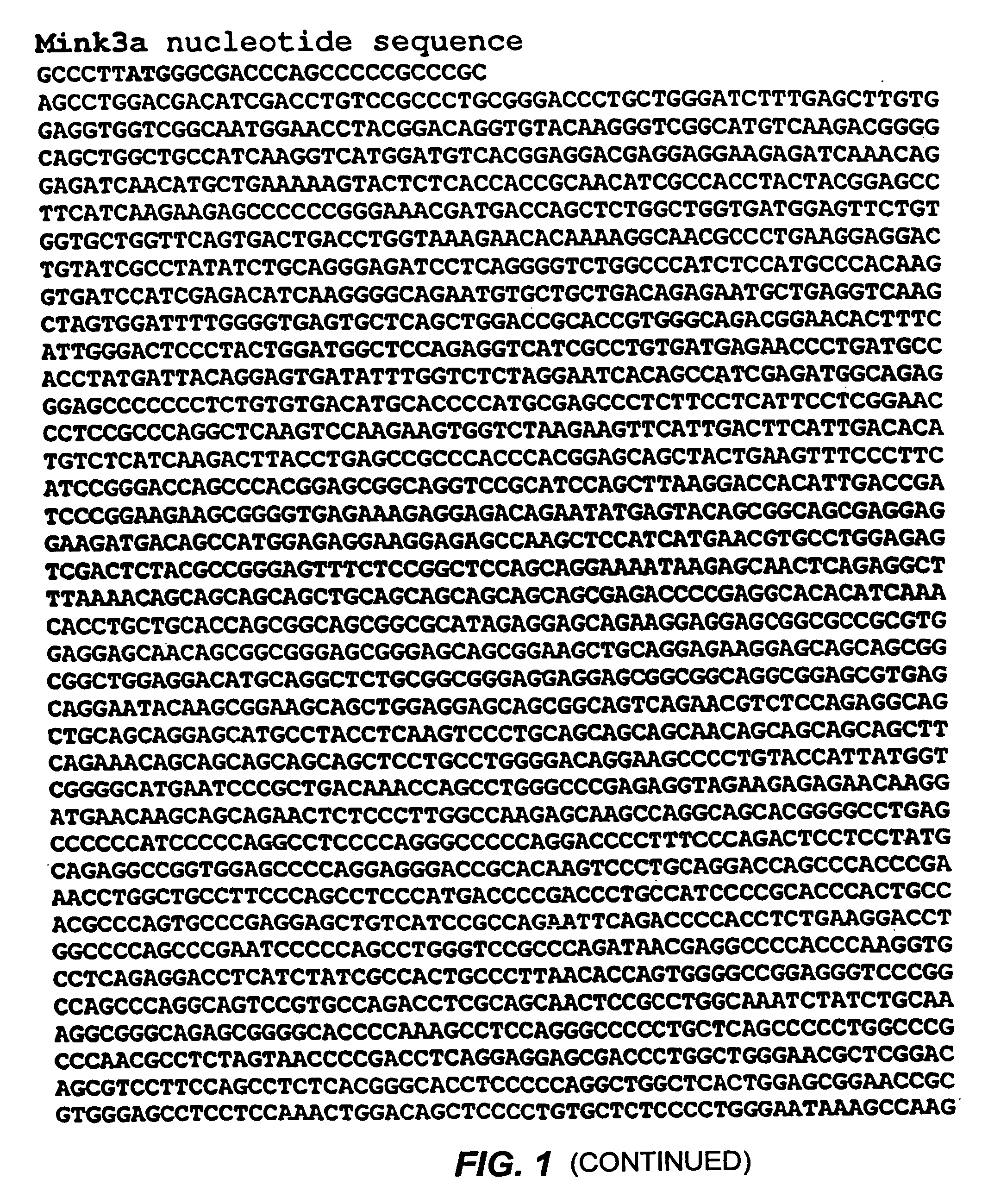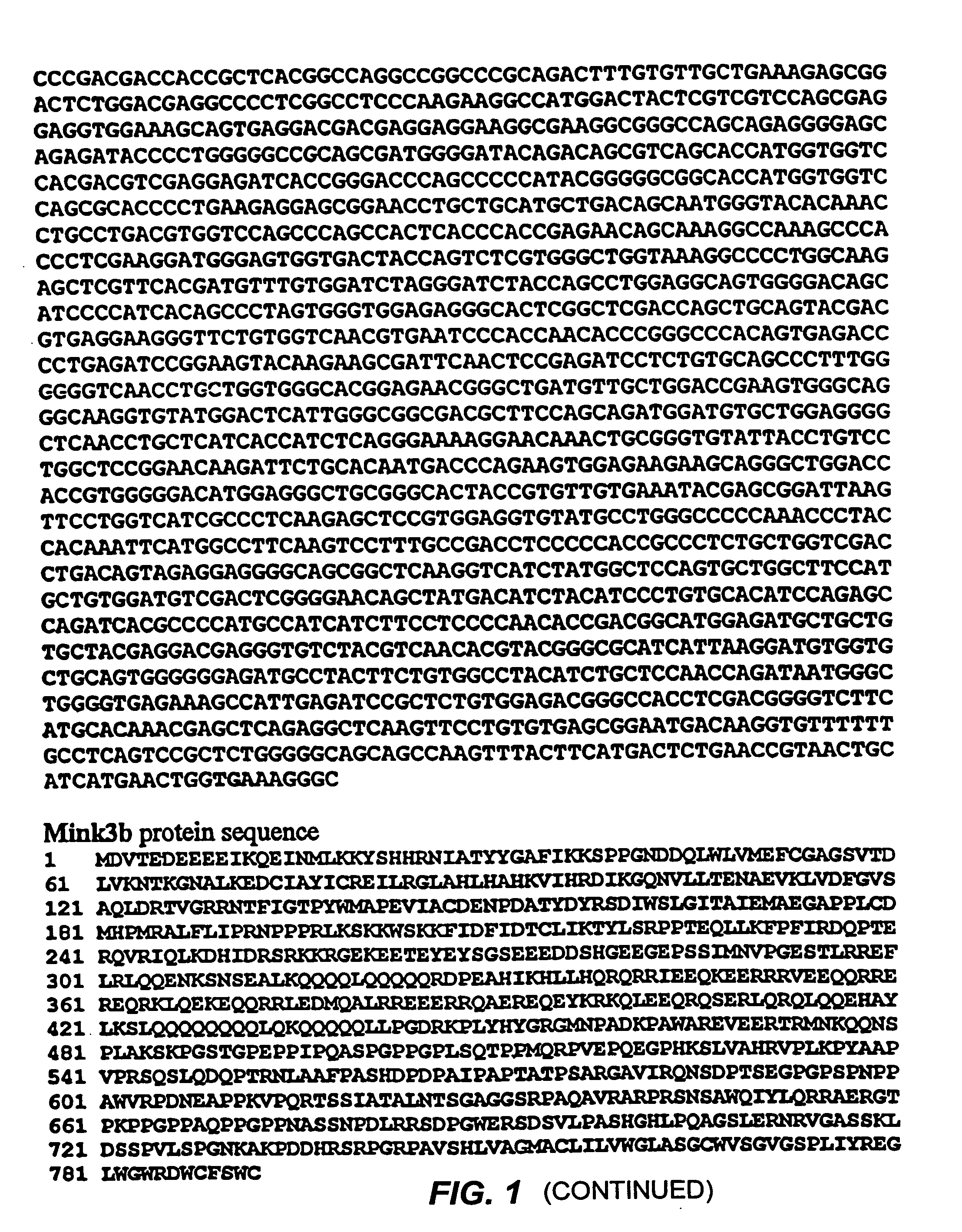Novel germinal center kinase proteins, compositions, and methods of use
a germinal center kinase and composition technology, applied in the field of compositions and methods for modulating cell proliferation, survival, morphology, and migration, can solve the problems of accelerating the accumulation of mutations driving malignant transformation and genomic instability
- Summary
- Abstract
- Description
- Claims
- Application Information
AI Technical Summary
Benefits of technology
Problems solved by technology
Method used
Image
Examples
example 1
[0321] A MINK3 antisense nucleic acid complementary to a MINK3 cDNA from a Jurkat cDNA library was identified in a functional screen for nucleic acids capable of inhibiting cell death following exposure of HeLa cells to taxol (data not shown). The antisense nucleic acid comprises a nucleic acid sequence complimentary to that set forth by nucleotides 2804-3187 in SEQ ID NO:1.
[0322] MINK3 antisense nucleic acid was used to clone and identify three isoforms of MINK3 (MINK3a, MINK3b, MINK3c, set forth in SEQ ID NOS:1, 3, and 5, respectively).
[0323] HeLa cells were transfected with expression vectors encoding MINK3a, MINK3b, Bc12, or MINK3 antisense nucleic acid complementary to the nucleic acid sequence set forth by nucleotides 2804-3187 in SEQ ID NO: 1. As an additional control, cells were transfected with empty vector.
[0324] Following transfection, cells were exposed to a range of taxol concentrations and a mitochondrial respiration assay (XTT) was performed on cell lysates to dete...
example 2
[0326] Hela cells were transfected with expression vectors encoding either Bc12 or GFP, or an expression vector comprising a MINK3 antisense nucleic acid complementary to the nucleic acid sequence set forth by nucleotides 2804-3187 in SEQ ID NO:1. As an additional control, Hela cells were transfected with empty vector alone.
[0327] Following transfection, cells were exposed to taxol at a concentration of 40 nm or 60 mn. Cells were collected following taxol treatment and cell lysate was obtained. Western blots were run on cell lysates using anti-RB antibody and anti-Bc12 antibody. As a control, anti-cdk2 antibody was used.
[0328] Rb immunodetection was done on lysates from cells exposed or not exposed to taxol. In samples exposed to taxol, a faster migrating Rb-immunoreactive band (“cleaved Rb”) was detected in addition to the normal Rb immunoreactive band. Cleaved Rb was not detectable in cells transfected with Bc12 and exposed to taxol. The amount of cleaved Rb formed in response t...
example 3
[0329] 293 cells comprising a luciferase reporter gene fused to a regulatory sequence comprising an AP1 element were transfected with MINK3 antisense nucleic acid complementary to the nucleic acid sequence set forth by nucleotides 2804-3187 in SEQ ID NO:1, or an MEKK1 expression vector, or an empty expression vector.
[0330] Following transfection, luciferase activity was determined using a luminometer, in order to determine the level of expression of the reporter gene.
[0331] MEKK1 induced reporter gene expression, while MINK3 antisense nucleic acid inhibited the basal level of reporter gene expression (FIG. 3).
PUM
| Property | Measurement | Unit |
|---|---|---|
| Fraction | aaaaa | aaaaa |
| Fraction | aaaaa | aaaaa |
| Cell proliferation rate | aaaaa | aaaaa |
Abstract
Description
Claims
Application Information
 Login to View More
Login to View More - R&D
- Intellectual Property
- Life Sciences
- Materials
- Tech Scout
- Unparalleled Data Quality
- Higher Quality Content
- 60% Fewer Hallucinations
Browse by: Latest US Patents, China's latest patents, Technical Efficacy Thesaurus, Application Domain, Technology Topic, Popular Technical Reports.
© 2025 PatSnap. All rights reserved.Legal|Privacy policy|Modern Slavery Act Transparency Statement|Sitemap|About US| Contact US: help@patsnap.com



